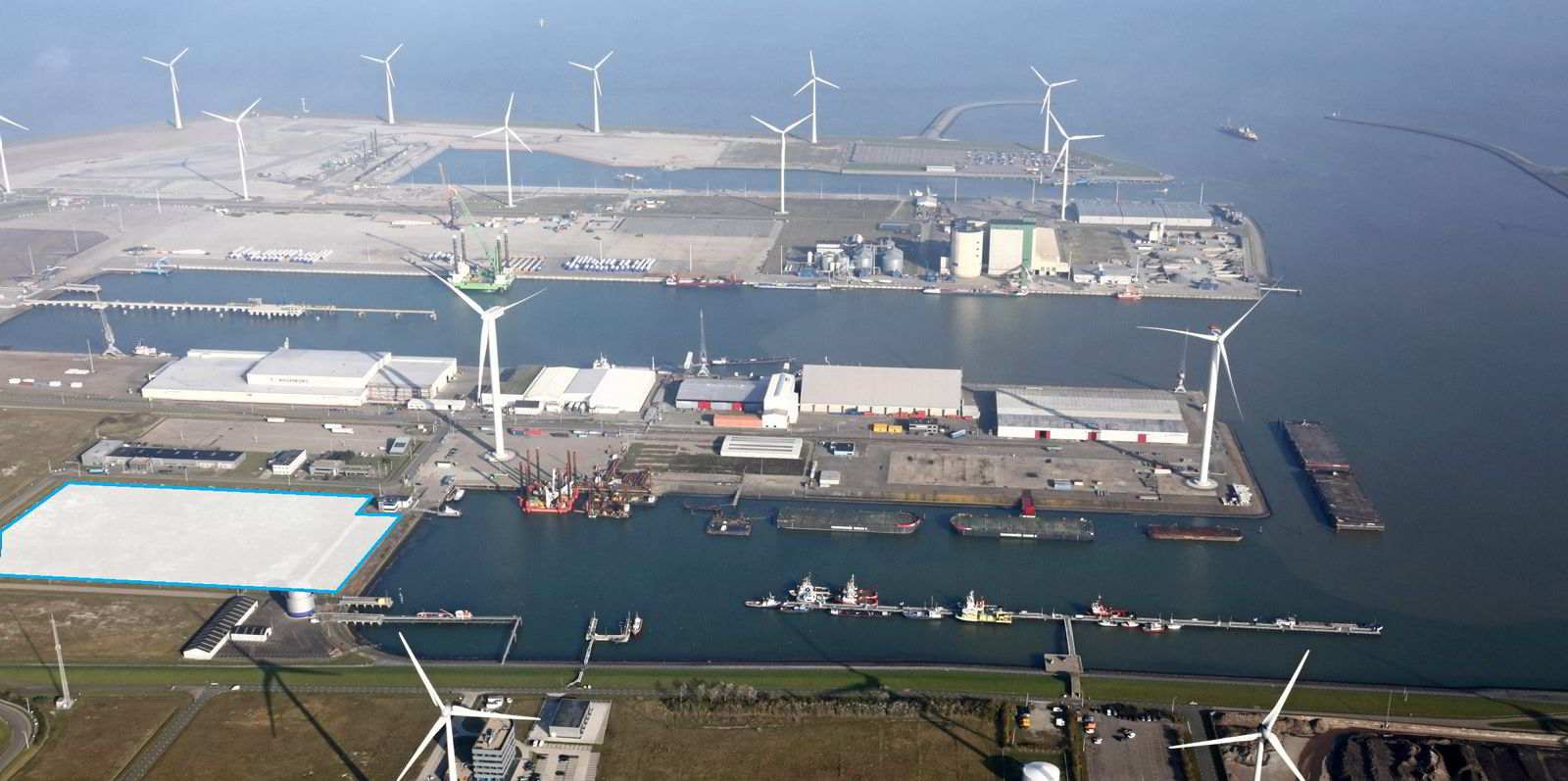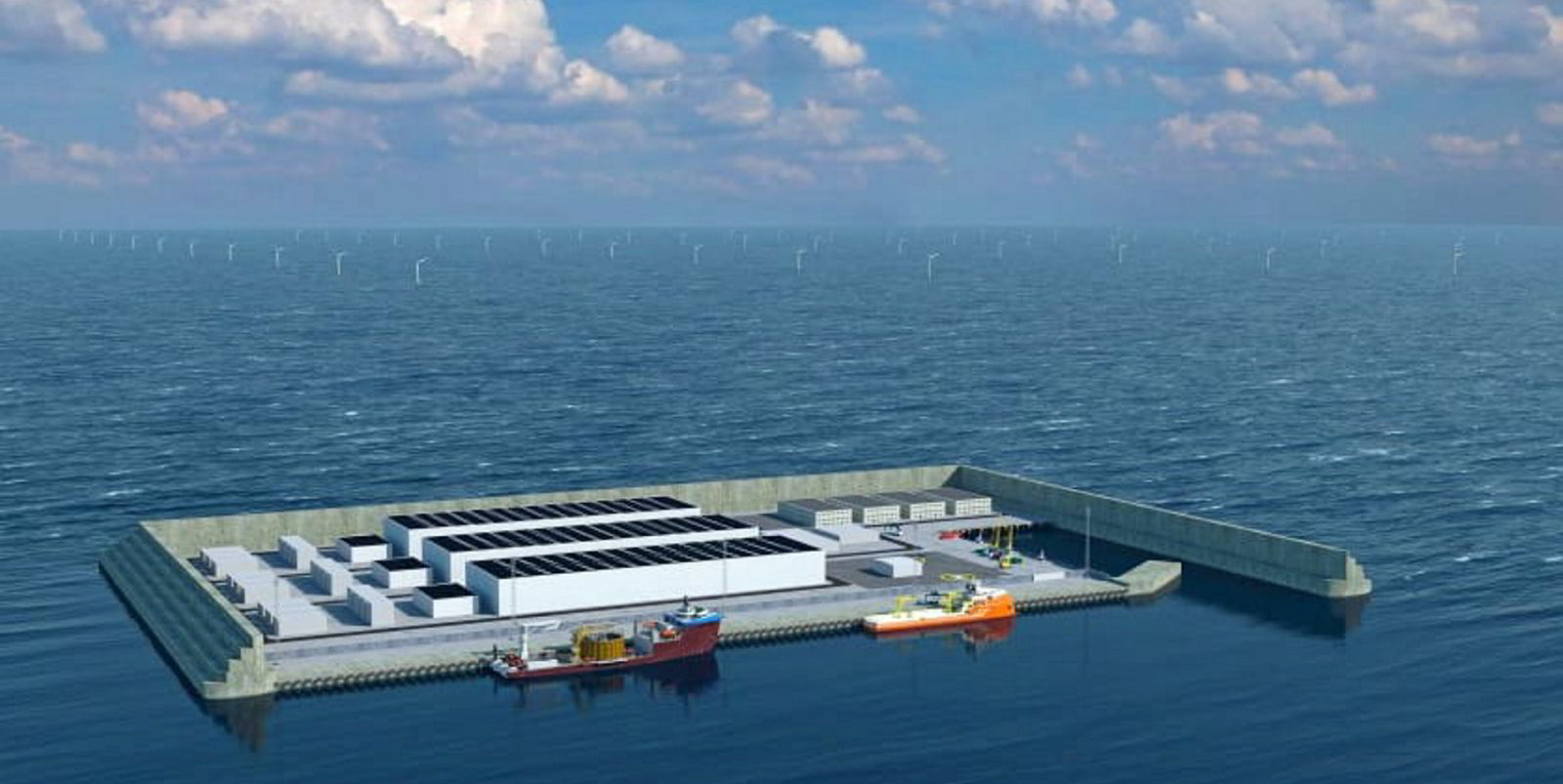Nordic industrial giants to use offshore wind for Europe's largest green hydrogen plant
CIP unveils plan for 1GW electrolyser on Danish North Sea coast linked to ammonia production for Arla, Danish Crown and Moller-Maersk
23 February 2021 12:51 GMT UPDATED 23 February 2021 14:11 GMT
By Bernd Radowitz
Copenhagen Infrastructure Partners (CIP) has announced plans for Europe's largest green hydrogen facility on Denmark’s North Sea coast, powered by offshore wind and producing H2 to be used in the form of ammonia by Scandinavian shipping and agricultural giants such as Arla, Danish Crown and Moller-Maersk.
The 1GW electrolyser and an adjacent green ammonia plant in the port town of Esbjerg is expected to enter operations in 2026, CIP partner Michael Hannibal told Recharge.
Hannibal added that the companies are seeking all necessary environmental and other permits, and are expecting to take a final investment decision on the roughly €1bn ($1.2bn) project in 2023.

Gigawatt-scale: the world's 13 largest green-hydrogen projects
Read more
Some larger hydrogen projects are in the early planning stages in Europe, such as the NortH2 or AquaVentus ventures in the Dutch and German parts of the North Sea, but those have longer planning horizons and would only get to a gigawatt scale in the 2030s.
"Scaling it up to a really large scale of 1GW electrolyser capacity is an interesting challenge, especially for the supply chain engaged,” Hannibal said.
Surplus offshore wind power
Hannibal added that no single offshore wind farm has been chosen for the power to feed the electrolyser, but some of it could come from Denmark’s 1GW Thor project that is due to enter service between 2025 and 2027.
The electricity is slated to come in part from power purchase contracts (PPAs), as well as from surplus offshore wind power in Denmark's grid. The northern European country on windy days can already meet all its electricity needs from offshore wind and still have surplus production, Hannibal said.

Equinor joins 10GW Shell-led offshore-wind-to-green-hydrogen project — here’s why
Read more
The offshore wind power will first be used to produce green hydrogen in the electrolyser. In a second step, the green H2 will be processed into green ammonia to be used in agriculture as CO2-free fertiliser, and by the shipping industry as green fuel.
Using the green ammonia from the Esbjerg plant is expected to reduce CO2 emissions by about 1.5 million tonnes per year, or the equivalent to removing 730,000 cars from the roads permanently, CIP said.
CIP, dairy and foods companies Arla, Danish Crown and DLG, and shipping groups Moller-Maersk and DFDS in a memorandum of understanding (MoU) committed themselves to realising the facility.
“With this project, we support further development to cut CO2 emission from agriculture and shipping in Denmark, through the use of CO2-free green fertilisers and green fuel,” said Christian Skakkebæk, senior partner in CIP, responsible for the Energy Transition Fund that is slated to finance the project.
“The agriculture and shipping industries are embarking on a journey of decarbonisation.”
Investors
PensionDenmark is among the potential investors for the Esbjerg project through CIP’s Energy Transition Fund.
“This is a natural evolution for us at PensionDanmark,” said the company’s chief executive Torben Möger, who is also chairman of the Danish Government’s Climate Partnership on Finance.

'Dawn of a new era': Denmark to build world's first artificial energy island in North Sea
Read more
“More than 10 years ago, we were a first mover into renewable infrastructure investments including offshore wind. We are excited about the opportunity to continue investing with CIP at the forefront of the energy market developments, beginning with the project in Esbjerg, and will present the opportunity to our board next month.”
Decarbonising agriculture
The Nordic agricultural and foods producers see the planned Esbjerg facility as an opportunity to decarbonise at least part of their dairy and meat operations.
Jais Valeur, chief executive at Europe’s largest pork producer, Danish Crown, said: “We want to cut CO2 emissions by 50 % in 2030, and we want to be carbon neutral in 2050.
“The Power-to-X facility planned by CIP in Esbjerg will bring an important contribution to our efforts: green fertiliser. By replacing chemical fertiliser with green fertiliser at the field, we can spare the atmosphere for 1.5 million tonnes of CO2.”
Greener shipping
In the shipping industry, companies expressed hopes the project could replace part of their current fossil fuel use.
”There is a very real sense of urgency in curbing shipping’s emissions, and we must develop scalable carbon neutral fuels,” said Henriette Hallberg Thygesen, CEO of fleet & strategic brands at shipping giant A.P. Moller-Maersk.
The company, which operates the world’s largest fleet of container vessels, plans to have a first vessel in the water that is running on carbon neutral methanol by 2023.

'New industrial adventure': shipping giant Knutsen ups sails for offshore wind market
Read more
“Nevertheless, we consider green ammonia as a promising option for marine fuels and a dual fuel engine for ammonia is under development. We are optimistic that ammonia, along with methanol and alcohol-lignin blends will be powering Maersk-vessels in the future.”
Shipping and logistics company DFDS, which is among the largest in the North Sea region, added no green fossil alternative for vessels exists currently.
“That’s why we’re partnering in projects like power-to-ammonia,” the company’s CEO Torben Carlsen said.
“The cooperation of fuel users and producers along with scientists and society is the fastest way to make sustainable fuels available as realistic alternatives to the fossil fuels we combust in our vehicles and vessels today.
“I hope that this partnership will help us reach our goal of operating zero-emission ferries and trucks much faster than without the partnership.”
Excess heat from the Esbjerg facility will be used to provide heating for a third of the local households in the city, CIP said.
rechargenews.com |








